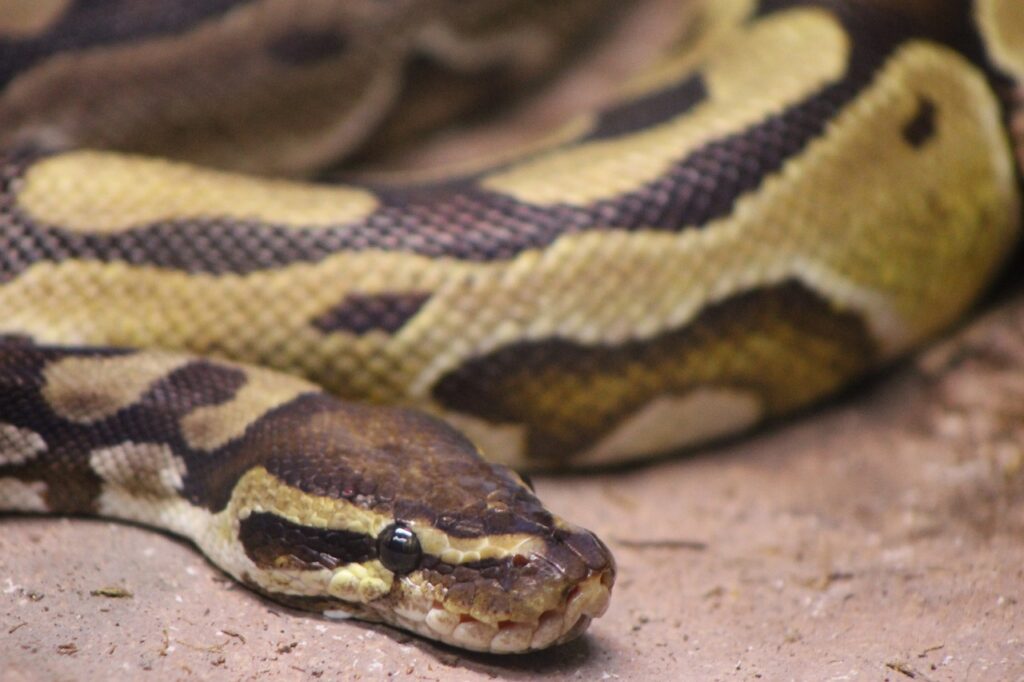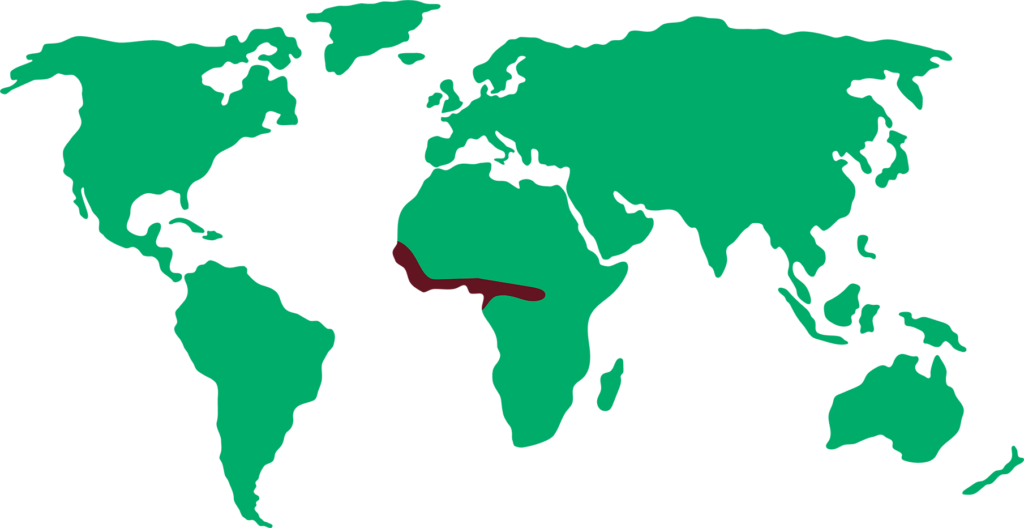ROYAL PYTHON
Python regius

LENGTH

1,5 m
WEIGHT

1,5 kg
LIFESPAN

30 years
The royal python is also known as the ball python. The name comes from its shyness, as it tends to curl up into itself, making it look like a ball. Because of its docility, this snake is often common as a pet.
General characteristics
Their body is covered with scales and they have approximately 250 vertebrae. Females are usually larger than males. Their head is quite small. The colour pattern of their scales is black with some golden or brown shapes and spots on the dorsal, while their belly is white.
Feeding
They are carnivorous and usually nocturnal. Like other pythons, their jaws are designed to swallow prey whole. Thanks to their sharp teeth, they catch their prey and strangle them with their body until they stop breathing, and then swallow them whole.
They feed mainly on small rodents such as rats or small rabbits, as well as birds and reptiles.
Behaviour
Like other pythons, the ball python is constrictor. It is called a ball because of its tendency to curl up and tuck its head inside itself, simulating a ball.
They are quite calm and small in size, so many people keep them as pets.
Reproduction
The ball python is oviparous, incubating its eggs for approximately two months. As in many other cases, the female takes care of the eggs until her young hatch, and once this happens, she leaves the young alone.
Threats
They have little threat, in fact, for some Christian Igbos these pythons are treated with exquisite care. If a ball python is killed by mistake, they build small coffins for a small funeral.
Distribution
It is distributed across the African continent, specifically in countries such as Senegal, Gambia, Guinea, Mali, Sierra Leone and Liberia among many others.

Did you know?
In some places it is considered a symbol of the land.
The name royal python comes from a legend that says it was the snake that Cleopatra wore coiled around her wrist.
Some pythons have lived more than 48 years in captivity.
Conservation status
